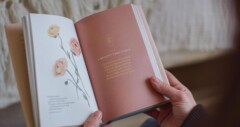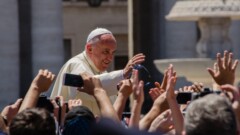Last night was a rough night. My daughter woke up at 11:30, terrified about something. My wife eventually surrendered and brought her into bed with us. When my daughter climbs into our bed I always end up with her pointy end (her toes) jabbing into me, so I soon gave up and went to sleep in her bed. No sooner had I gotten back to sleep than my son woke me up complaining that he was having bad dreams about aliens. And so on. It was one of those nights parents just have to deal with. My efforts at creativity this morning fell flat, so I peered into the archives of this site to find an article that discusses a topic I have been thinking about a little bit recently. I have made several changes to the article, which I first published a couple of years ago, and am publishing it again.
I recently read an article (which alas I can no longer find) that described a search the BBC made for the Loch Ness Monster. The corporation hired a team of experts to sweep Loch Ness from end to end, back and forth for several days using some of the world’s most sophisticated sonar equipment. After a complete, thorough search they concluded that there is no evidence to indicate that a monster lives in the Loch. To prove a theory as to how the myth of the Loch Ness Monster continues to grow despite the mounting evidence that Nessie does not exist the team performed a devious little experiment. They rigged up a system which allowed them to raise an object from under the water far out into the Loch. They would then interview the inevitable crowd of tourists standing by the shore to ask them what they had seen. They elected to use a section of fencing as the decoy, deliberately choosing an object that looks absolutely nothing like an ancient aquatic creature. They waited until a busload of tourists had arrived on the shores of the Loch and once the bus was unloaded they raised the fence a few feet out of the water. There was great excitement on the shore and sure enough, when they interviewed people after the fact, the majority of them described seeing something that looked just like the traditional depiction of the Loch Ness Monster.
The people who led this study concluded that this was a type of “pareidolia.” Pareidolia is “a type of illusion or misperception involving a vague or obscure stimulus being perceived as something clear and distinct.” (Skeptics Dictionary) Other examples of this are seeing the face of Mother Teresa in a cinnamon bun or seeing the face of a man on the moon. In the case of the people gathered at Loch Ness, they saw something vague and yet were able to describe it in detail. The detail was fabricated by their minds based on what they already imagined the Loch Ness Monster to look like.
Certainly the people who saw a section of fence being raised from the water did not expect to see a fence — they expected to see a monster. Many of them had traveled from other countries for the expressed purpose of visiting Loch Ness to see if this monster is real or mere myth. So when the object came up from the water their minds allowed them to see what they wanted to see. Had they been expecting to see a Volkswagen Bug emerging from the water I have little doubt that their minds would have allowed them to believe that is what rose from the depths.
What we see in this rather extreme example is the value of objectivity. Had the people visiting Loch Ness been objective they would have seen nothing but a section of wet fencing material. They would have seen the reality in all its simplicity.
This article made me ask myself how often I approach the Bible with the wrong attitude. How often do I approach it with my own agenda in mind? Homosexuals approach the Bible determined to find proof that their lifestyle is not only acceptable but condoned by Scripture. So when they read that John was the apostle that Jesus loved, they see support for their lifestyle. When they read about the love between Jonathan and David they see them as homosexual and allow it give license to their own immorality. Often people on both sides of various debates misuse Scripture in this way. Take, for example, the issue of women in positions of leadership in the church. Proponents of both sides will eschew objectivity, approaching the Scriptures determined to prove their point. When we approach the Bible determined to prove what we already believe we will more often than not find enough proof to satisfy ourselves, even if we are taking passages far beyond their real meaning.
Several days ago reviewed Invitation to Silence and Solitude by Ruth Haley Barton and she provided a clear example of this type of misreading. She was clearly determined to find some Scriptural license for the silent prayer she advocates and so read into the story of Elijah a complex system of theology that goes far beyond what Scripture teaches. So was so determined to see silent prayer that she saw it in a story where it clearly does not exist.
The lesson to me is that I need to approach the Bible objectively, asking God to reveal His truth to me through His Word. I need to lay aside my presuppositions and biases so, if necessary, I can allow God to change and mold me. I need to allow the Bible to show me what a given passage really means, not merely cast onto it what I want it to say.
John Calvin once warned against treating the Bible like a ball that we bounce around at will. The Bible is the very Word of God and its teachings can be rightly learned only by the most impartial and objective study of the text. And that means being impartial and objective even about the parts we may not like, for often God’s ways are at odds with our far-too-human agendas.










